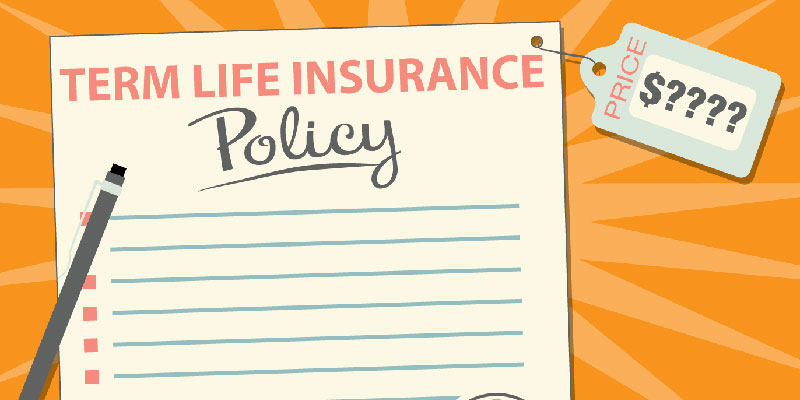

by insurance | Dec 22, 2018 | Basic Life Insurance Facts
If you own and drive a car, it will be necessary to buy insurance on that car. It is illegal to drive without at least liability insurance, which protects you from being sued by another party if you are deemed to be at fault for an accident or damage. Use the information in this article as a guide to purchasing the right automobile insurance for yourself.
Most insurers recommend you carry at least $500,000 coverage for each person per occurrence. In addition, you should also have $100,000 per occurrence for property damage, $500,000 per occurrence for uninsured motorist and under insured motorist, as well as comprehensive and collision to cover the actual cost of repairs. There will be a deductible amount for both collision and comprehensive.
Liability is a type of insurance that some people carry when the automobile they are driving is of little value. Many times an insurance carrier will advise a client that it is no longer reasonable to carry full coverage on their automobile when the value drops below a certain amount. You should still carry liability insurance to make sure you are protected from a lawsuit if you should be involved in an accident that is ruled either partly or primarily your fault.
Woman driving car on empty road
Property damage covers the repair or replacement of property other than another automobile. If you should happen to lose control of your vehicle and do damage to someones home or some other property, this type of insurance will cover those costs.
It is important to have uninsured motorist coverage because some people do not carry any insurance at all, in spite of the fact that driving without at least liability is against the law in most states. Uninsured motorist coverage will protect you from the loss of your property and injury to yourself or passengers in your vehicle if you are involved in an accident caused by an uninsured motorist.
Comprehensive is the type of insurance that covers smaller incidents that really are not the fault of anyone. An example of this would be a stone that is kicked up from the roadway and cracks your windshield. Comprehensive insurance would pay for the replacement of your windshield, but you would be required to pay a small deductible.
A deductible is the amount you will need to satisfy before the insurance company will pay for the repair of your car. Deductibles are usually required for comprehensive and collision coverage.
Shop around to find the best insurance rate possible for your area and situation. Your rate will depend on the area you live in, the amount of driving you do and your driving record.
The most important thing you can do to reduce your insurance costs is to have a clean driving record. If you have gone at least three years without any violations or tickets, your rate will reflect your good driving habits. You can also reduce your rate if you are a non-smoker and are over the age of 25.
Insurance can have many details you should consider, but if you go over your situation one step at a time with an agent, the process will be easier. This article is intended to provide the information you need to make the best decision about buying insurance for your vehicle.

by insurance | Dec 21, 2018 | Basic Life Insurance Facts
To begin with, you need to understand that life insurance falls into two very broad categories: Whole and term. The basic difference between term and whole life insurance is this: A term policy is life coverage only.
In whole life insurance policy, as long as one continues to pay the premiums, the policy does not expire for a lifetime. As the term applies, whole life insurance provides coverage for the whole life or until the person reaches the age of 100. Whole life insurance policies build up a cash value (usually beginning after the first year). With whole life, you pay a fixed premium for life instead of the increasing premiums found on renewable term life insurance policies. In addition, whole life insurance has a cash value feature that is guaranteed. In term and whole-life, the full premium must be paid to keep the insurance.
With level premiums and the accumulation of cash values, whole life insurance is a good choice for long-range goals. Besides permanent lifetime insurance protection, Whole Life Insurance features a savings element that allows you to build cash value on a tax-deferred basis. The policyholder can cancel or surrender the whole life insurance policy at any time and receive the cash value. Some whole life insurance policies may generate cash values greater than the guaranteed amount, depending on interest crediting rates and how the market performs. The cash values of whole life insurance policies may be affected by a life insurance company’s future performance. Unlike whole life insurance policies, which have guaranteed cash values, the cash values of variable life insurance policies are not guaranteed. You have the right to borrow against the cash value of your whole life insurance policy on a loan basis. Supporters of whole life insurance say the cash value of a life insurance policy should compete well with other fixed income investments.
Unlike term life policies, whole life insurance provides a minimum guaranteed benefit at a premium that never changes. One of the most valuable benefits of a participating whole life insurance policy is the opportunity to earn dividends. The insurance company based on the overall return on its investments sets earnings on a whole life policy. In addition, while the interest paid on universal life insurance is often adjusted monthly, interest on a whole life policy is adjusted annually. Like many insurance products, whole life insurance has many policy options.
Make sure you can budget for whole life insurance for the long term and do not buy whole life insurance unless you can afford it. You should buy all the coverage you need now while you are younger, and if you cannot afford whole life insurance, at least get Term. That is why whole life insurance policies have the highest premiums it is insurance for your whole life, no matter when you pass on. The level premium and fixed death benefit make whole life insurance very attractive to some. Unlike some other types of permanent insurance, with whole life insurance, you may not decrease your premium payments.

by insurance | Dec 21, 2018 | Basic Life Insurance Facts
There are may companies providing life insurance services; you can get most of the information you need from insurance brokers, financial advisers who work for insurance companies, employees of insurance companies, and other sources. Much of the information you receive, however, will be in general terms or will focus more on sales talk aimed at getting you to purchase life insurance from the person you are talking to.
The truth is that there are many different types of life insurance available not just the cradle to grave coverage offered by insurance sales people. Here are three of them.
Level Term Life Insurance
This is a type of coverage with a specific face amount (the death benefit) over a set number of years with the premium generally kept constant throughout the policy’s term. The term of insurance is fixed; it can be 1, 5, 10, 15, 20, and even 30 years.
The typical aim of this kind of insurance is providing the family some financial protection in case of the insured’s death within the term ensuring that there are enough monies to support the survivor and any dependent children. It may also be designed to cover payments for loans or mortgages, again ensuring that the beneficiary will not be burdened by the responsibility of repaying them when the insured passes away.
This is how it works. You purchase the insurance plan. This insurance will cover you effectively for the term or the number of years specified in your insurance contract. Within that term, too, you will have to pay insurance premiums regularly. If you die within that specific time period, your family or whoever your beneficiary is will receive the amount of money specified in the plan. If you don’t die within the term, you lose your premiums, unless your policy states that you get them back.
Decreasing Term Life Insurance
This is taken out specifically to provide a contingency for repaying the policyholder’s loans and mortgages just in case he passes away before he’s able to repay them. The insurance coverage is for a specific period (usually equivalent to the life of the mortgage or loan), and the level of coverage decreases during the policy’s term usually in conjunction with the amount of the loan or the mortgage (e.g., as the loan is repaid, the amount of cover is reduced to cover the balance remaining). The premium remains constant during the term of the policy.
Decreasing term insurance works pretty much the same way as level term insurance in term length and what triggers the payout. The only difference is the decreasing value of the coverage.
Whole Life Insurance
If you take out this type of insurance, your family or beneficiary will get a lump sum of money. This money can then be used to pay for your children’s educations or mere day to day expenses.
Of all three types, this is the most expensive in terms of premiums. However, this type of insurance lets you build cash value which you can loan out. You can also surrender the insurance in exchange for the total cash value of the policy. This type of insurance is therefore more flexible since it offers you more options. Moreover, you have coverage as long as you live, provided of course that you keep up your premium payments.
The above are only three of the available life insurance options available. It would be best to sit down with an authorized insurance person for advice on the best type of insurance for your particular needs.

by insurance | Dec 21, 2018 | Basic Life Insurance Facts
Life insurance is a subject that brings on many different opinions. While some believe it is a waste of money or even considered gambling, most people understand that life insurance is primarily used to ensure that your family or beneficiary is well taken care of upon your death. Life insurance also ensures that your family will be able to take care of your burial and funeral expenses.
While there are many different types of policies as far as life insurance is concerned, term life insurance is considered to be pure insurance because it builds no cash value like other policies. While some life insurance policies are used as a type of savings or retirement account, term policies are in place for a specific amount of time and only paid out in the event of death. Term life is the most practical and unselfish way to ensure no one has to worry about how to take care of you in the event of your death.
History of Life Insurance
As with most things ancient, Rome recorded one of the first life insurance policies in existence. Roman groups called Fratres (or burial clubs) came together to establish this form of security for their workers. These policies were set up by the poor to pay for the funerals of fellow club members and to help the surviving family financially.
The first insurance company in the United States was started in 1735. This South Carolina based company, called the Friendly Society, lasted until 1740. In 1759, the first life insurance company was established in Philadelphia by the Synod of the Presbyterian Church. It was started for the benefit of Presbyterian ministers’ families. As with the Romans, the basic financial needs of surviving family members would be taken care of.
As far as ancient times, society has known that those who are left behind need some sort of financial security upon a loved one’s death. Undoubtedly, it seems that even in ancient times, burial and funeral expenses alone were enough to wipe away a family’s savings. In the case of a family being impoverished, a proper burial might even be out of the question.
While no one likes to think of death and dying, term life insurance is something that is very much needed. The trauma of losing a loved one is obviously emotionally and mentally draining and at least a life insurance policy allows the added financial burden to be eliminated. Choosing the right policy to accommodate your needs is the key to planning a secure future for your family.
Most Practical Choice
If you are looking for a simple way to look after your family after your passing, term life insurance seems to be the most practical way to go. With even a minimal policy, you can ensure that your family will be able to pay for burial and funeral expenses. If you have children, hopefully your policy will enable them to attend college or perhaps your family’s house can be paid off.
With the advent of the Internet, it is easy to study the various types of term life insurance available online as well as the requirements that each carrier might have. You can obtain fast quotes online as well. Some term life insurance companies even offer no medical exam policies or cheap policies that are affordable. Terms usually run in 10-year periods 10, 20 or 30-year policies are the norm.

by insurance | Dec 21, 2018 | Basic Life Insurance Facts
Insurance is the means that an individual or a family can use in order to help them prepare against the emergencies of life. Life insurance is the form of this preparation that helps in the worst emergency the death of a loved one. This could be for anyone in the family, or for the main breadwinner. Because so many things can happen to people, mostly unexpected, we want to be ready in the event that it does happen – but hope, too, that it never does. This article will show you how to determine just how much life insurance you should have in order to be prepared in the best way possible.
When determining just how much coverage you should have, here are some things that you definitely want to take into consideration.
Your Yearly Expenses
In the event that the main earnings winner should pass away, the goal of a life insurance policy is to sustain the family at its present level of living for a while. This means you need to calculate exactly what it costs for the family to live at the present level for one year. In order to help you calculate according to the rising cost of inflation, you should add a percentage increase for each year – possibly as much as 8%.
Educating The Children
To this figure, you need to add just how much it will cost to put each child all the way through college. Of course, this may be a little hard to do, since college costs are rapidly raising. You should add, however, a percentage increase for each year until they graduate. A suggested amount would be 1 or 2% increase of the current tuition per year before college and during.
Current Debts
All of your current debts should also be added to the total amount of life insurance coverage. By adding this amount, it would enable the family to continue its current level of life – debt free. If there is any mortgage balance still owed, credit card debt, your own education bills, and any other bills should all be added into the calculation.
Funeral Costs
The costs of funerals these days have become a lot more expensive than they used to be, along with everything else. Funerals are now an average of about $6,500. Just to be safe, though, you need to add another $4-$5,000 so no debts are left after the funeral.
Inheritance
In your absence, it would be a good idea to leave your children a little extra to get them started and secure in life, if you are able. Calculate how much you want each of them to
have, and then add that amount to the total.
Finally, in your calculations, you may want to add a couple of other things – depending on your situation. If you have parents that may need nursing home care before long, or a divorce situation that you have to include, or you may even want to add a donation to either a religious organization or to a charity. It all depends largely on what you can afford. You will not want to buy hastily, without having a rather good understanding of life insurance, and make sure that you do a cost comparison, too.

by insurance | Dec 21, 2018 | Basic Life Insurance Facts
One question that’s asked by nearly everyone eventually is “should I get a life insurance policy?”.
Life insurance pays out a benefit when the person insured dies during the time that the policy is in force. It can provide the cash needed to pay for burial, pay off mortgages and loans and give your family a financial cushion while they get back on their feet. When you’re young or have little discretionary income, it’s easy to tell yourself that life insurance is just for the well-off, but the truth is that life insurance is far more necessary for those who have no monetary cushion against life’s rougher times.
You should consider life insurance if:
- you have dependents
- you have a mortgage or other detbs
- you own a business or are a key employee in a business
You have dependents
The moment you are responsible for another person in your life, you need life insurance. Whether it’s your children, a spouse or employees, if someone counts on your ability to earn an income, then life insurance is a necessity.
You have a mortgage or other detbs
If you have a mortgage, you need life insurance to pay off the remainder of the mortgage if you should die before the mortgage is paid off. If you don’t have some sort of insurance to pay off your mortgage when you die, your heirs will have to deal with the debt.
You own a business or are a key employee in a business
If you own a business, are partners in a business or are a key employee in a business, a life insurance policy can keep your business afloat while your employees or partners make arrangements to replace you or dissolve the business according to your wishes. If this is your reason for investing in life insurance, it could possibly be charged off as a business expense.
There are several types of life insurance available to you, and the type that’s best for you will depend on a number of factors. If your main concern is to ensure that your family is not saddled with a capital and interest mortgage in case of your death, then decreasing term life may be your most economical option. With decreasing term life, you pay for just the amount of coverage that you need. For example, if you take out a £150,000 capital and interest mortgage on your home, you can protect it with a decreasing term life policy that starts out with a payout of £150,000. That payout will decrease over the years as you pay off the mortgage loan.
Level term life insurance is the next tier of life insurance policy. Like decreasing term life, it pays out a benefit if you die under the terms of the policy – but rather than decreasing as your mortgage is paid off, it remains level. Generally, term life insurance is available in terms from one to forty years, and often comes with a range of options which can extend the policy at an additional cost.
Whichever type of life cover you need, it’s important to know exactly what’s right for your needs and what the various different companies and policies provide. If you are in any doubt about this you should consult an independent financial adviser who can look at your circumstances and match the best policy to your needs.ShareTweet






